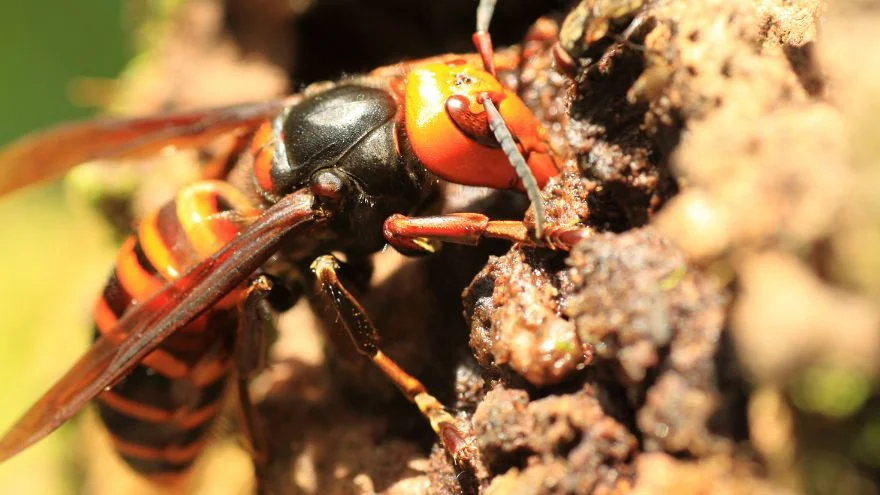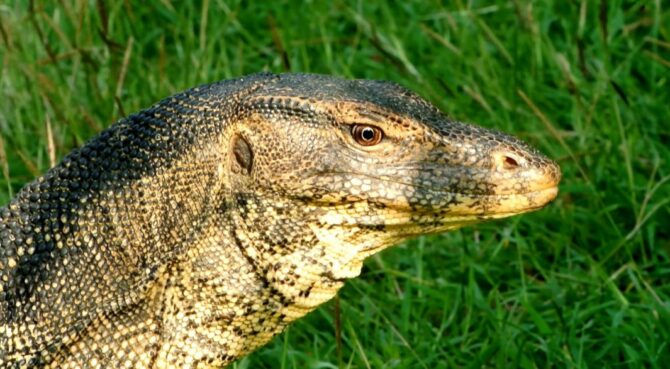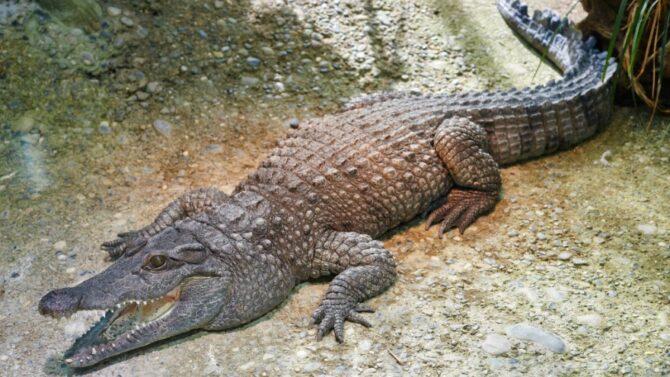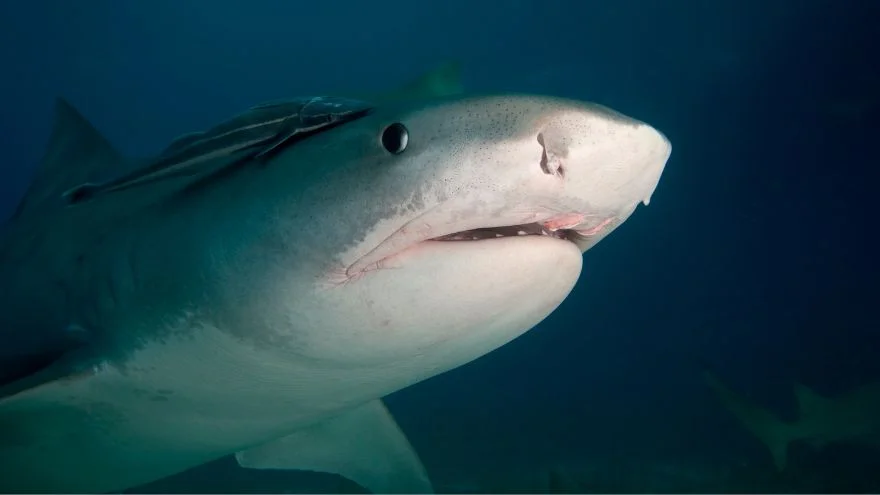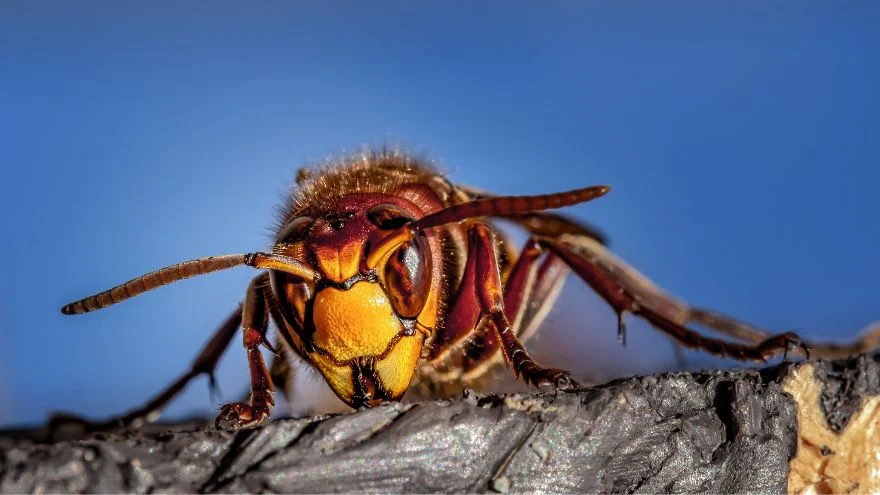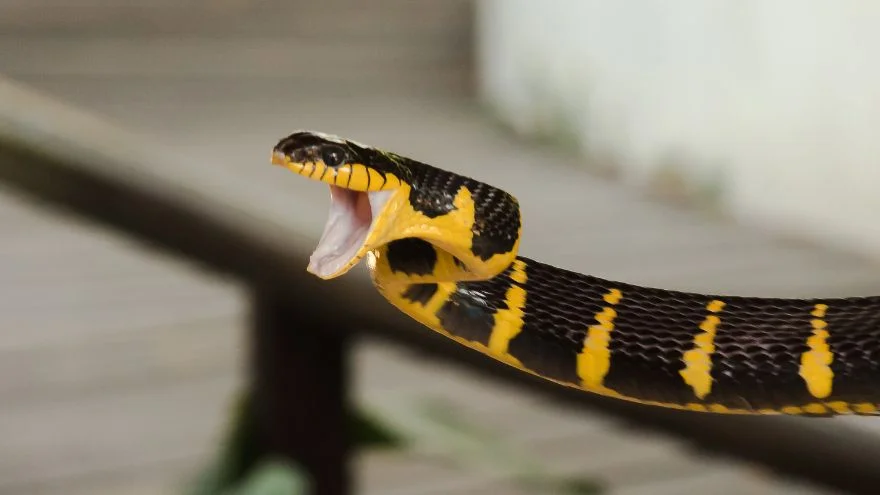China is the most populous country in the world, situated in Asia with a population of about 1.4 billion people.
About another 50 million people visit every year to experience some of the famous Chinese attractions, one of which is beautiful nature like waterfalls, clear lakes, and forests.
China is home to many wildlife, including snakes, spiders, bears, and pandas.
Some animals, like the giant panda, are so cute that you want to run to them and be cuddled. However, you shouldn’t.
Some of the most dangerous animals in China could also be very deadly and you don’t want to cross paths with them if you find yourself in their habitat.
What are the Most Dangerous Animals in China?
1. Chinese Cobra
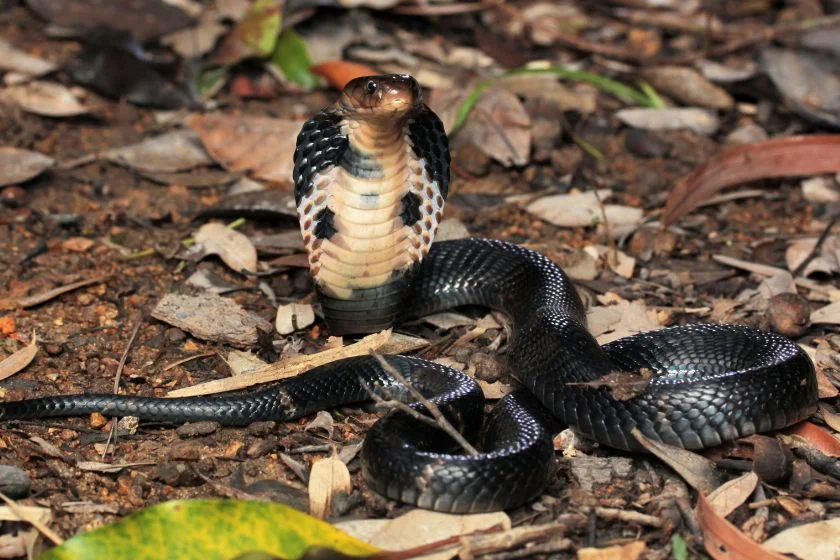
- Scientific name: Naja atra
- Classification: Reptile
- Habitat: Forest
- Diet: Carnivorous
- Conservation status: Endangered
China alone is home to 240 snake species, of which 69 are venomous. One of these venomous snakes is the famous Chinese cobra.
This snake can grow up to 1.2 to 1.4 meters and up to two meters in length.
This venomous snake is widely distributed across southern China and can be found in forests and rice farms.
Chinese cobras are very easy to identify. They raise their head shaped like a hood when alert.
However, a raised hood-shaped cobra head is a warning from the cobra that if it feels threatened, you should stay away. Chinese cobras can also spit venoms at potential threats.
The venom of a Chinese cobra can cause respiratory difficulties, fever, and necrosis. In case of a bite or venom spit, get antivenom as fast as possible and seek medical attention.
2. Many-banded Kraits
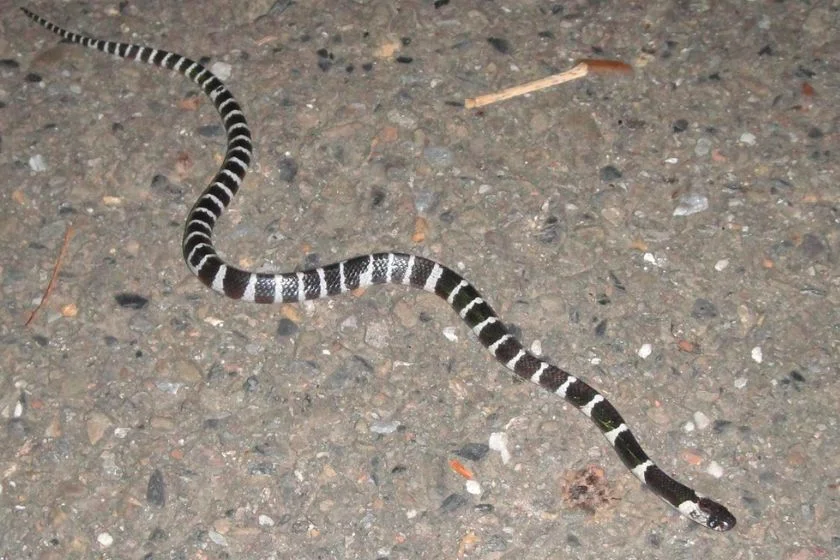
- Scientific name: Bungarus multicinctus
- Classification: Reptile
- Habitat: Forests
- Diet: Carnivorous
- Conservation status: Endangered
The many banded kraits are one of the 69 venomous snakes found both in south and central China. The many banded kraits are a close relative of the Indian krait.
This snake is so dangerous that the government of Hong Kong declared them lethal. However, purchasing or hunting one in China can land you in prison.
They can be recognized by their white and black bands extending from their heads to their tail.
Like the Chinese cobra, they have a length of about 1.2 to 1.5 meters and can adapt to almost any habitat. The effects of many banded krait bites include pain, nausea, and paralysis.
Here comes the scary part, you might not feel all these symptoms immediately after a bite. In 2018 a woman died 7 days after a many-banded krait bit her.
In case you are bitten by this snake, or you think you have been bitten, it is very important to seek and get medical care as soon as possible.
3. Chinese Green Tree Viper
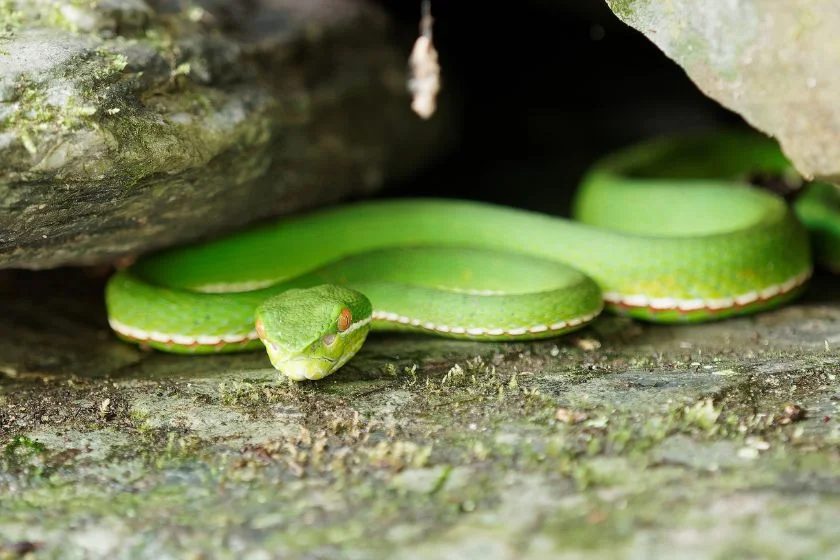
- Scientific name: Trimeresurus stejnegeri
- Classification: Reptile
- Habitat: Forests
- Diet: Carnivorous
- Conservation status: Least concern
The Chinese green viper, otherwise known as the bamboo viper, gets its name from its skin color. The green tree viper has a distinct green color with a white or golden-colored belly.
They are nocturnal but can be seen on tree branches during the day. They like to hunt frogs and lizards for food.
The green viper moves slowly but can become aggressive if you disturb them.
Although a viper venom is not as strong as the cobra and the branded krait, these snakes have a longer fang that can inject venom deep into the skin and cause severe pain, necrosis, and organ failure.
It is important to know that although green tree vipers are not quick movers, they are quick biters.
If a viper accidentally bites you, you should seek medical a
Help as soon as possible
4. Asian Black Bears
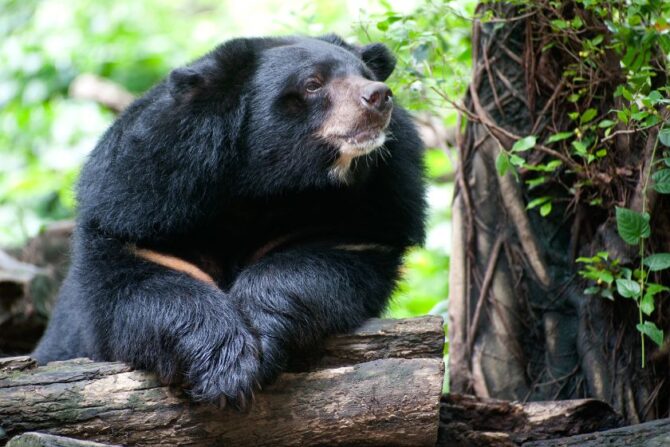
- Scientific name: Ursus thibetanaus
- Classification: Mammal
- Habitat: Forests
- Diet: Omnivorous
- Conservation status: Endangered
The forest of southeast China is home to Asian black bears. Although they eat just about anything, they are smaller than their counterparts in the United States, with adults weighing just about 200kg.
They have distinctive ears. Black bears are classified as omnivores and feed on various things, from fruits to nuts, insects, small mammals, and fishes.
Occasionally they may go for bigger prey like deer.
Despite how dangerous these animals sound, and their conservation status of being endangered, they are still hunted for medicine in China, which makes them very aggressive towards human beings.
They have huge paws, sharp claws, and teeth which they use to inflict severe injuries.
Bears won’t go after you without provocation, so if you think there are bears around, it is advisable to make them aware that you are speaking aloud.
5. Bird spiders

- Scientific name: Theraphosa blondi
- Classification: Arachnid
- Habitat: Forests
- Diet: Insects
- Conservation status: Endangered
Suppose you find yourself on the island of southern China. Bird spiders are one of the animals that you should look out for.
These forest arachnids love to hang out in the rain forests of China and feed on insects and small animals.
Unlike their name implies, they do not eat birds, and neither can they fly.
The venom from a bird spider is very potent, and small amounts can kill animals as big s rats. Nobody knows what will happen if someone gets venom from this spider.
However, I wouldn’t want to find out. A bite from this spider will defiantly come with excruciating pain. Therefore, it is advisable to avoid this species when you see them.
6. Chinese Red-headed Centipede
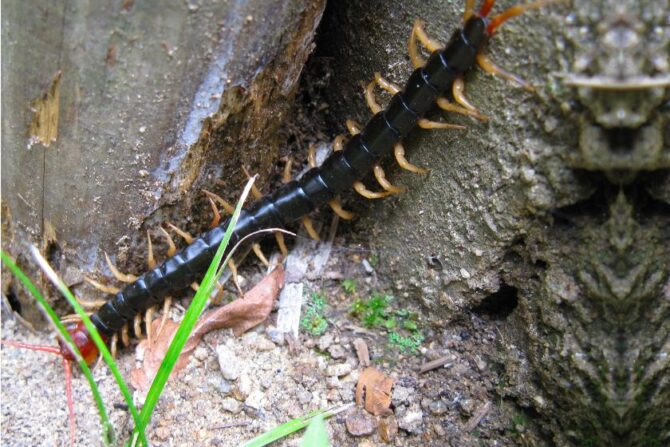
- Scientific name: Rcolopendra subspinipes mutilans
- Classification: Arthropod
- Habitat: Forests
- Diet: Ants
- Conservation status: Not endangered
Deep into south China, you will find one of the most venomous centipedes in the world.
The Chinese red-headed centipedes go by many other names, such as the giant and jungle centipedes.
I know you think it’s just a centipede, but this jungle creature has claimed the life of a young girl in the Philippines.
The bite from a redhead centipede will leave you tired, in pain, and with a fever, but it might not kill you. All the same, I won’t go around picking up centipedes in China.
In 2018 an antidote to this centipede venom was created by scientists in China.
However, seek medical attention in case of a bite, especially if you are young, old, or immunocompromised.
7. Pufferfish
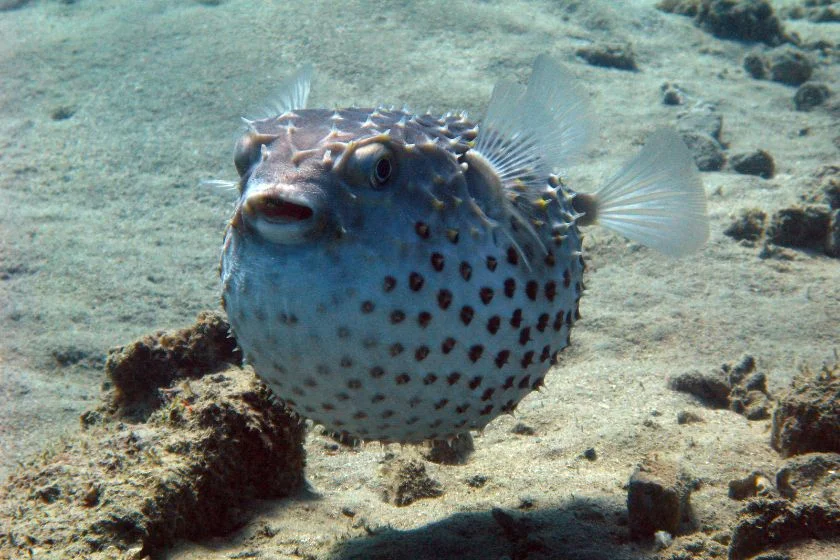
- Scientific name: Teraodontidae
- Classification: Pisces
- Habitat: Aquatic
- Diet: Carnivorous
- Conservation status: Endangered
The puffer fish is common in China for two reasons, one is its existence there, and the other is because of its famous venom.
The puffer fish carries so much venom in its body and internal organs that it can still kill people even after cooking into a delicacy.
The puffer fish, also known as drum fish, originates from its ability to inhale water and double in size.
The Chinese government regulates the cooking and eating of this fish by ensuring that it is only sold to professional chefs that can cook it. In addition to that, the chef must taste the meal before it is served.
Pufferfish must not be bought for a third party; if you must risk your life, don’t risk other people’s life.
8. Asian Giant Hornet

- Scientific name: Vespa mandarinia
- Classification: Arachnid
- Habitat: Mountains, low forests, rainforest
- Diet: Nectar
- Conservation status: Endangered
The Asian hornet is the biggest in their family and by far the most dangerous of the wasp species. The adult giant hornet can grow up to 4.5 centimeters in length.
Brown in color with distinctive shades of orange n their head and a mix of orange and brown on their abdomen.
Giant Asian hornets live in forests and mountains; they love high altitudes, so it is rare for you to come across them.
They have a small stinger measuring 6 millimeters in length but do not be deceived. Shinichi Makino once described the hornet’s sting as a stab from a hot needle.
Asian hornets have also been responsible for the deaths of some people. In 2014, forty-one people were killed in southeast China.
Most of them died due to anaphylactic shock. They had suffered multiple stings.
In case of a single sting, you might not need to worry much, but if you were stung multiple times, you would need to seek medical attention.
9. Common Krait
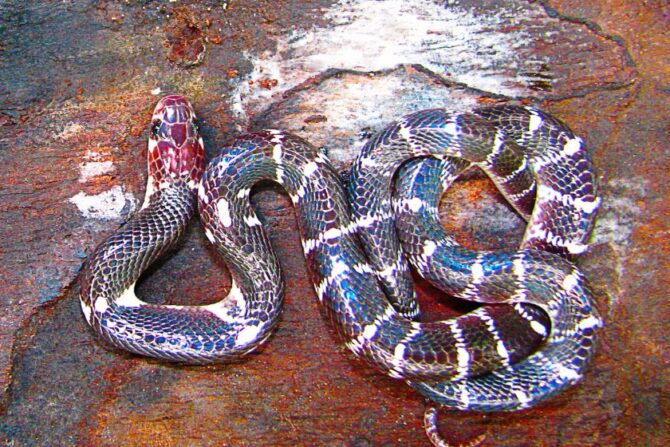
- Scientific name: Bungarus caeruleus
- Classification: Reptile
- Habitat: Rainforest
- Diet: Carnivorous
- Conservation status: Endangered
The common krait is not a native of China, but this vicious creature has found its way into Chinese territory over the years.
The adult krait grows up to the length of 0.9meters to 1.75 meters. The males are longer than the female because of a tail extension.
They can survive in different habitats, and they love to feed on other snakes.
The common krait is more active at night and carries a very potent venom that can kill a human being within 4 to 5 hours if medical attention is not received.
They rarely encounter humans, but when the rainy seasons start, they start to seek shelter in human settlements. A bite results in excruciating pain and paralysis.
10. Sea Snakes
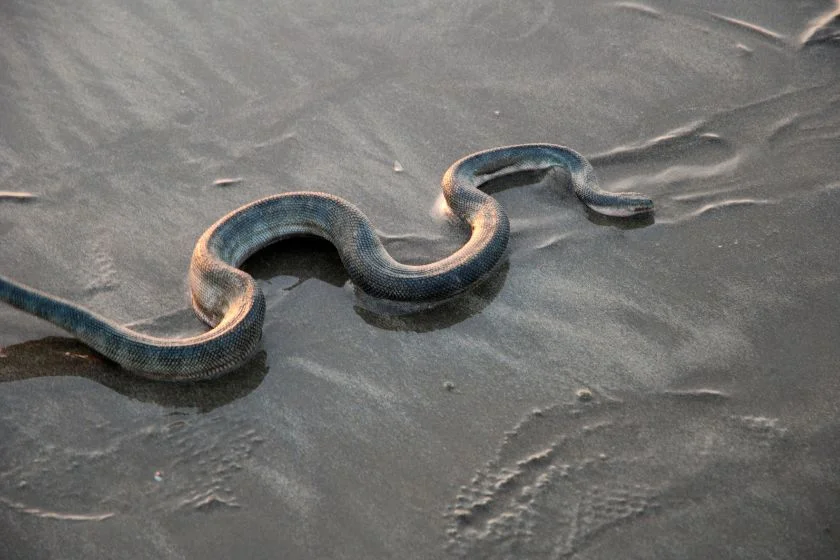
- Scientific name: Hydrophiinae
- Classification: Reptile
- Habitat: Aquatic
- Diet: Fish and other aquatic animals
- Conservation status: Endangered
Sea snakes are dangerous members of the cobra family.
They live in marine habitats that are not more than 100 feet in depth, most adults are about 1,5meters in length, but some individuals can grow up to 2.7 meters in length.
Sea snakes are not aggressive towards human beings and prefer to stay away or swim down to the river bed when humans are sighted.
Sea snakes eat small fishes and eels at the bottom of the water bodies they live in.
Although they have one of the most potent venoms of all snakes, the quantity of venom produced is small, and their fangs are short.
However, a single shot of their venom can paralyze and kill their prey within seconds.
11. Scorpionfish
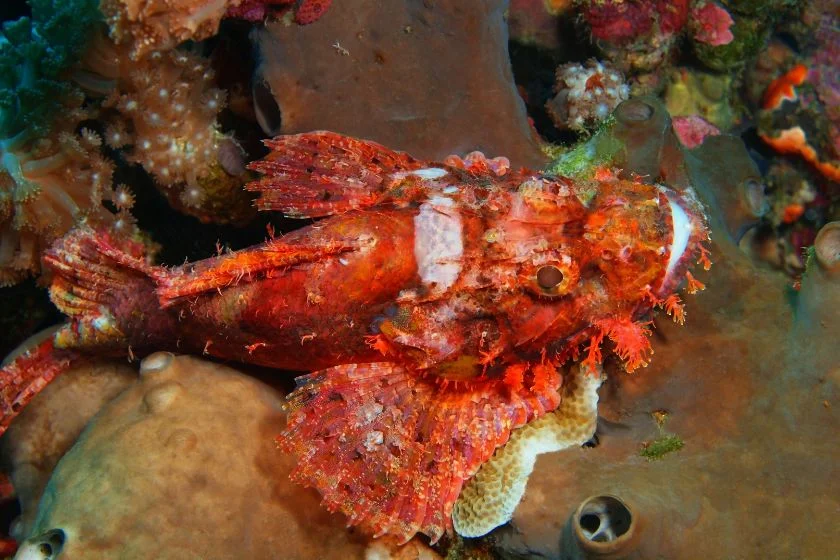
- Scientific name: Scorpaenidae
- Classification: Pisces
- Habitat: Aquatic
- Diet: Omnivores
- Conservation status: Endangered
The scorpionfish is a venomous marine fish. As their name implies, scorpion fish can sting with their spines and cause serious pain to the victim.
Surprisingly people keep these fish as pets. Your fastest chance of coming across this fish is in a domestic aquarium.
Scorpion fish is not a very aggressive animal; therefore, local divers are not at risk of being stung.
The common symptoms of a scorpion fish sting are pain, headaches, vomiting, and respiratory difficulties.
These symptoms normally shouldn’t last more than an hour, but some people have reported pains lasting up to a week.
12. Chinese Alligator
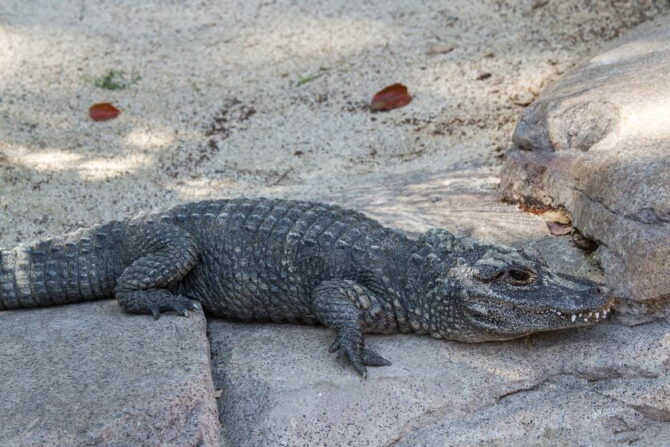
- Scientific name: Alligator sinensis
- Classification: Reptile
- Habitat: Freshwater
- Diet: Carnivorous
- Conservation status: Endangered
The Chinese alligator is a carnivorous animal known as the Yangtze alligator; these alligators can grow to five feet.
Occasionally they might grow up to 6 feet, weighing up to 50 kilograms. Unlike other alligators, the Chinese alligators are fully armored.
Even their bellies are covered in scales. The Chinese alligator feeds on fishes, sea birds, and any animal that comes close enough.
The Chinese alligator is endangered, and this is because they have been hunted so much over the years by locals who believe that they were eating the flesh of dragons.
These alligators do not hunt humans for food, but I would not want to be caught o the wrong side of an apex predator.
Although alligator attacks are not common, an attack will leave the victim severely deformed if they survive.
13. Golden Poison Frog
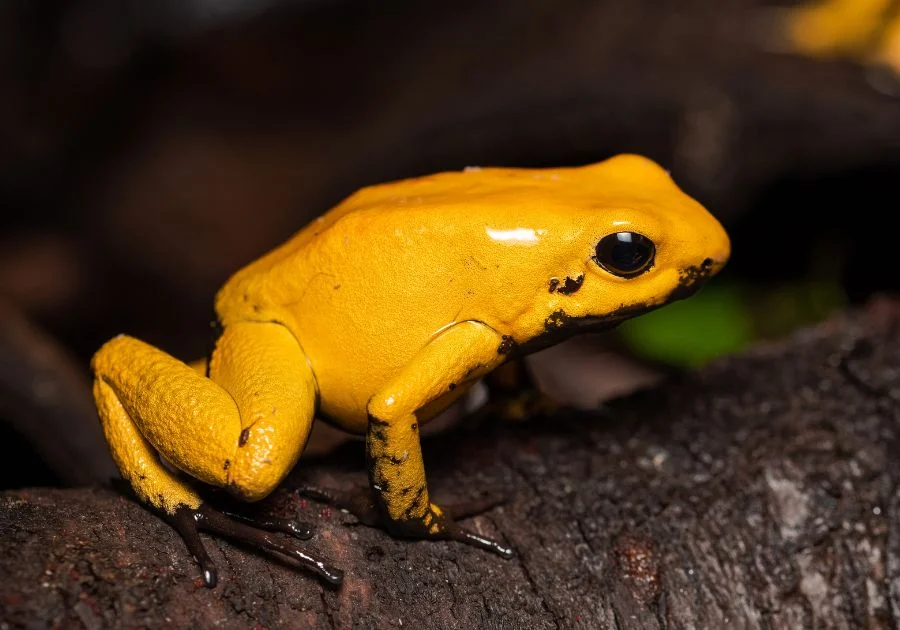
- Scientific name: Phyllobates terribilis
- Classification: Amphibian
- Habitat: Rainforest
- Diet: Insects
- Conservation status: Endangered
The golden poison frog is on the list of the earth’s most toxic animals. This 2-inch animal weighs about 28 grams and feeds on crickets, insects, flies, and termites.
The golden poison frog carries enough toxins to kill up to 10 people to warn predators they have this distinctive bright coloration.
These frogs are believed to derive their venom from ants and termites they eat.
Recent studies have also shown that frogs raised in captivity do not possess these toxins.
However, scientists believe this animal can be f great importance in the pharmaceutical industry.
14. Stingrays
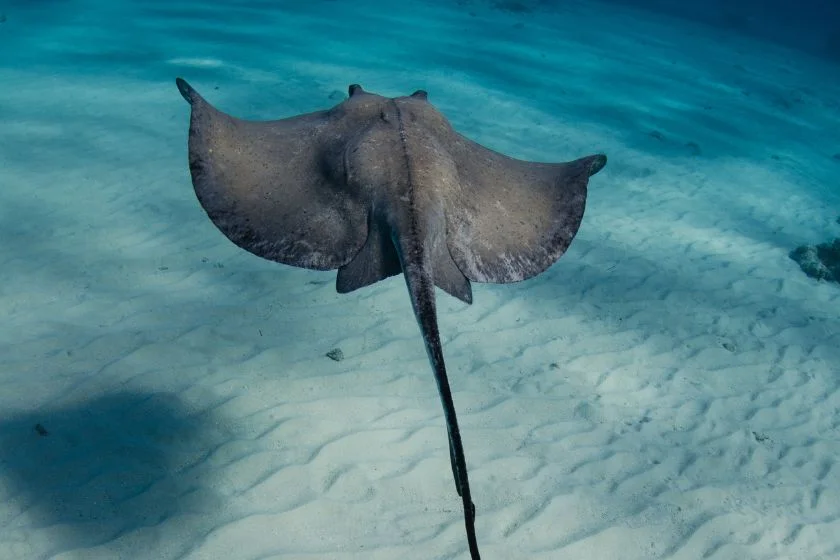
- Scientific name: Myliobatoidei
- Classification: Pisces
- Habitat: Aquatic
- Diet: Small fishes and prawns
- Conservation status: Endangered
From the name stingray, it is pretty basic to guess that these animals are dangerous. The Stingray is a close relative of the shark.
They have a jagged sting organ on their tail about 8 inches long.
If the Stingray feels threatened, the sting organ hardens in and can inflict serious injuries to a predator.
That is not all. The Stingray also releases a venom that impairs breathing and can lead to death.
15. Moray Eels
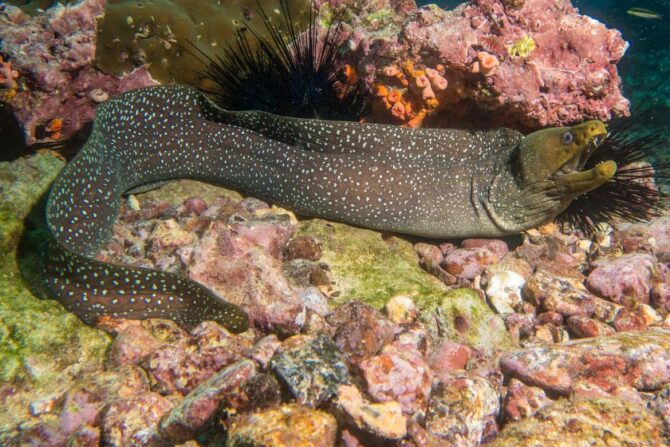
- Scientific name: Muraenidae
- Classification: Pisces
- Habitat: Aquatic
- Diet: Small fishes and prawns
- Conservation status: Least concern
Last is snake-like fish growing up to 8 feet. The moral eel has sharp teeth and strong jaws that can bite deep into the flesh.
Moral eels don’t possess any form of venom, but a bite from this fish can quickly become infected by bacteria from its mouth.
The moral eel feeds o all fishes and other aquatic animals they can catch.
Eels don’t normally attack humans but might bite to defend themselves.
It is advisable not to put your hands under rocks or in places where you can’t see well. Eels may just be hiding closely.
China Wildlife Safety Tips
There are a lot of beautiful animals in China, but you need to remember that some of these animals are still very dangerous.
However, you don’t need to worry.
Here are some tips that will help you stay safe while enjoying your trip:
- Find out every possible information about your destination and know the threats to tourists in that area you are visiting. Study the animals there and know what may predispose them to aggression
- Noise is another thing you should factor into your explorations. The Chinese black bears and many other animals prefer not to confront humans, so hearing human noises makes them aware of your presence. Hence, they leave.
- Do not touch colorful frogs or snakes or attempt to catch them. Bright colors are an indication of venom.
- Do not stick your hands under rocks or in dark holes. While diving, animals like the moral eel, sea snakes, and stingrays all lurk deep under rocks. Putting your hands under a rock is an invitation for a bite or sting from these animals.
- Avoid mountains and forests known for bees if you have sting allergies and if you must go there, wear protective gear.
Frequently Asked Questions
Are there lions in China?
Naturally, lions are not native to China; lions live in desert habitats like Africa, which does not exist in China. However, some zoos in China have lions on display for people to see.
Are there big cats In China?
Yes, there are big cats in China. The armur tiger and south China tiger are big cats, but this cat is critically endangered and can only be seen in zoos.
Does China have deadly spiders?
Yes, China has a lot of poisonous spiders, which include the bird spider, golden earth spider, tiger spider, and Chinese wolf spider.
Are there mosquitoes in China?
Yes, China is home to the famous tiger mosquitoes. They feed on blood and spread a lot of diseases.
Conclusion
Animals will avoid humans as much as they can.
Contrary to common belief, most of these most dangerous animals in China live far away in the forests and deep in the seas.
They will rarely move into human settlement. Therefore, stay clear and stay safe.
Discover The Most Dangerous Animals in Asia:
